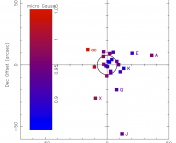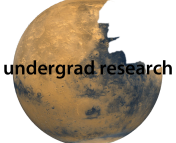A couple of weeks ago we put out a call for descriptions of research being done by undergraduates, and we got a great response! Today we’re publishing the first installment.
As a reminder, you can share what you’re doing too by emailing brief (fewer than 200 words) write-ups of your work to [email protected]. The target audience is one familiar with astrophysics but not necessarily your specific subfield, so write clearly and try to avoid jargon. Feel free to also include either a visual regarding your research or else a photo of yourself!
We look forward to hearing from you!
| Samuel Grunblatt Columbia University I just finished my second year as an undergrad at Columbia University. This summer I was a member of the NASA Academy at Marshall Space Flight Center and did soft gamma-ray astrophysics with the Gamma-Ray Burst Monitor on board the Fermi satellite with Dr. Chryssa Kouveliotou. Time Resolved Spectroscopy of Bright Bursts From SGR J1550-5418 |
| Jack Honor University of Wisconsin-Madison I am currently partaking in undergraduate astrophysical research at the University of Wisconsin-Madison. I am working with Barb Whitney on modeling radiative transfer in protostars. Radiative transfer is defined as energy transfer in the form of electromagnetic radiation, or light. The modeling software that was developed by Barb Whitney is currently in its fourth generation. The ability to handle new protostellar morphologies and processes was added in the newest addition. Radiative transfer models are useful because they bridge the gap between theory and observation. When observers see an object that confuses them, they can try to model the object in order to better understand what it is. The newest generation of this code allows for 3d models, gaps in a disk surrounding the protostar, fractal clumping in matter surrounding the protostar, spiral and warp structures in the disk, external illumination by the interstellar radiation field, among many others. As our observing techniques become more sensitive and new morphologies are discovered, our modeling software needs to be able to handle the newly discovered processes. I have been testing the code to make sure it models these new morphologies correctly. Also, I have been modeling real-world protostellar objects to help put parameters on some of their physical characteristics. Soon this code will be published and open for use by the astrophysical community. |
Many thanks to Samuel and Jack for their contributions!





Trackbacks/Pingbacks